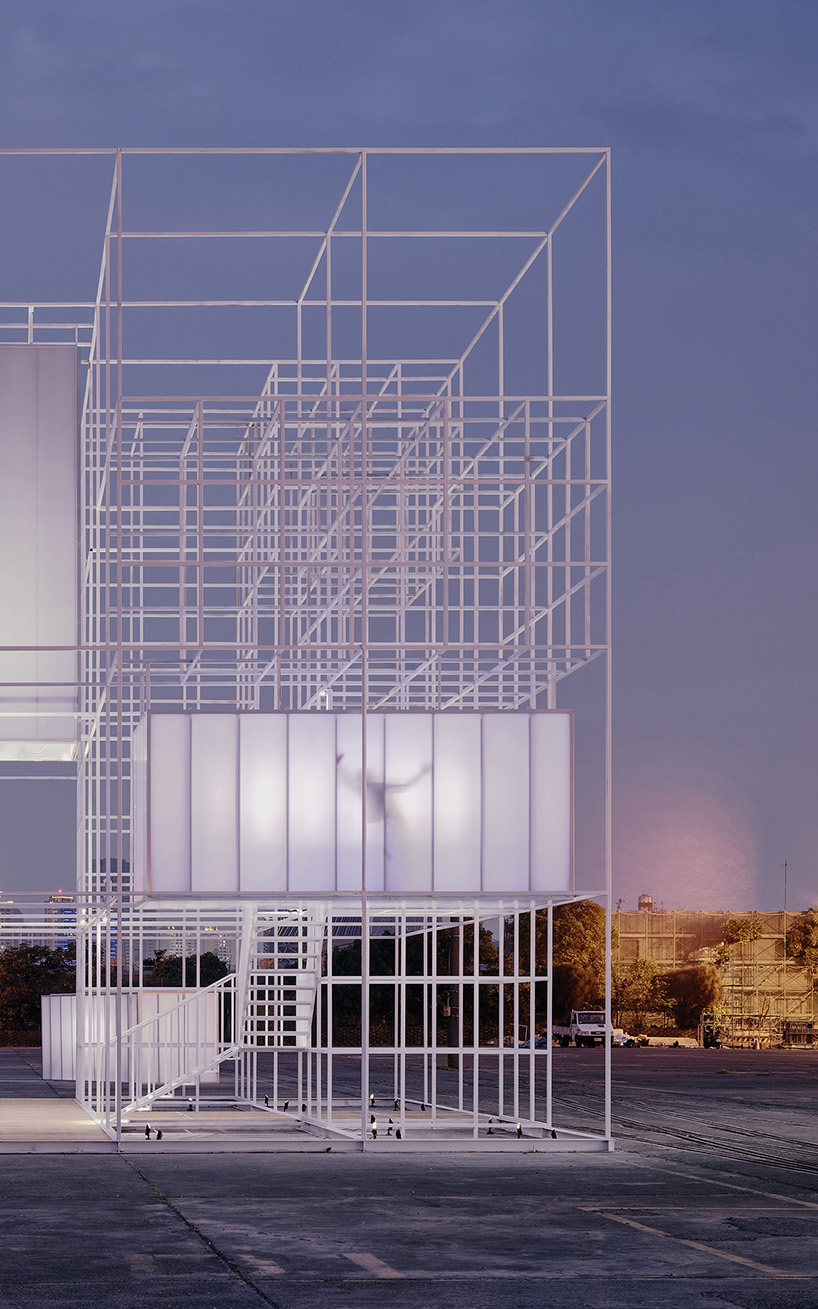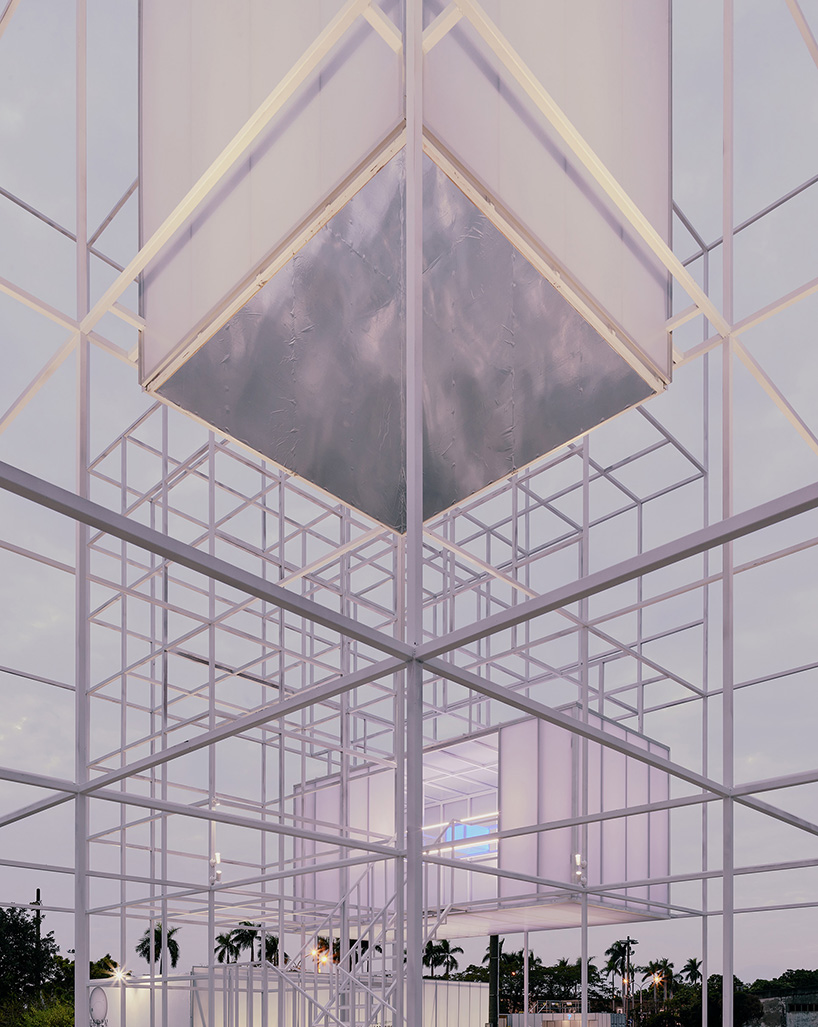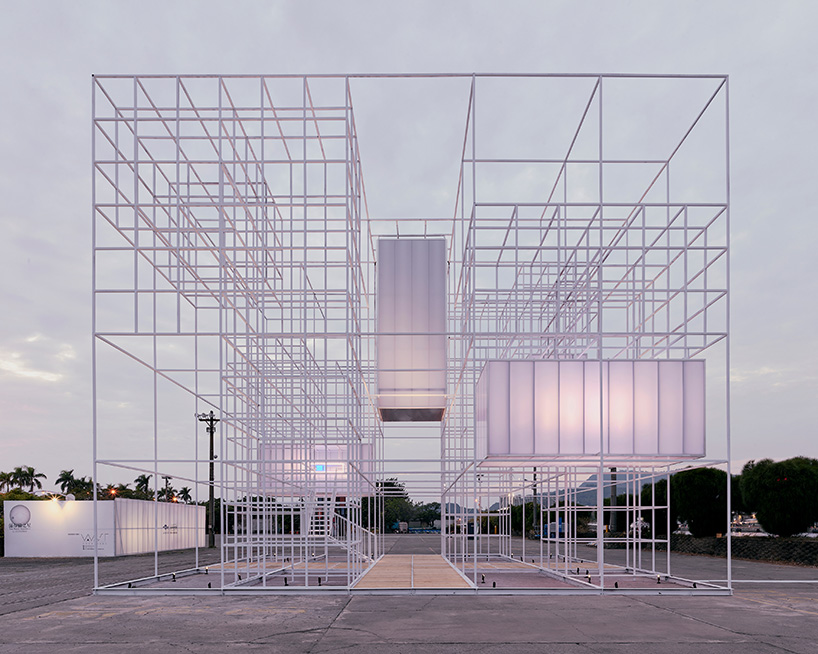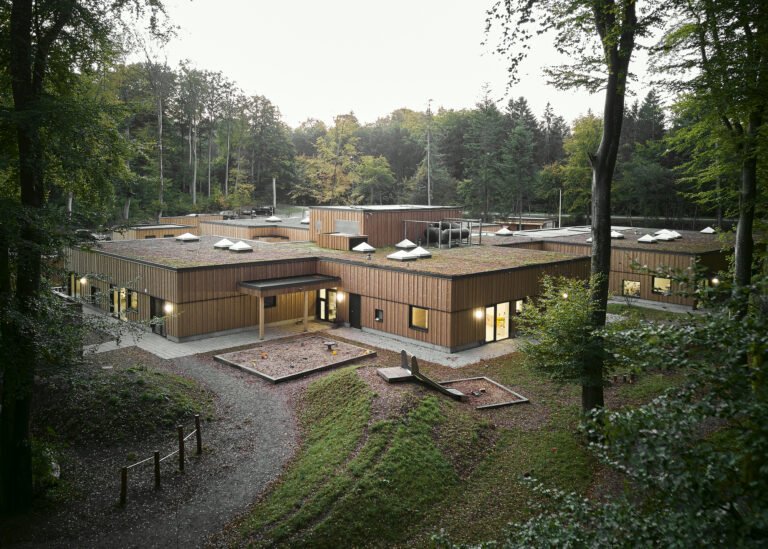floating luminous containers evoke curiosity and self-reflection in QIU’s pavilion in taiwan
qiu installs the cube in kaohsiung, taiwan
For the Kaohsiung Museum of Fine Arts’ International Container Art Festival, Quality Innovation United (QIU) Architects has completed The Cube, an ambitious pavilion which perfectly embodies the festival’s theme of Van Buren Supernova, encouraging participants to explore light, stars, hope and a new life. Situated on a pier in the regenerated art district of Kaohsiung, Taiwan, The Cube seeks to spark the imagination with considerations about Kaohsiung’s future, while remaining firmly rooted in the city’s port heritage. QIU’s concept takes form in a lightweight cuboid frame structure holding five luminous containers that appear to be floating amongst the interconnected lines of light, transforming Kaohsiung Port’s industrial skyline and encouraging visitors to explore the mobility of the unknown.

when the visitor enters The Cube, they become performers of the art installation
all images courtesy of QIU
luminous floating containers evoke curiosity
QIU’s The Cube – ‘commu(nica)ting vessels through interstellar corridors’ – is deemed the most ambitious structure and largest pavilion in more than a decade of the Kaohsiung International Container Arts Festival. ‘We wanted to challenge everything, not only in the structure’s size, but also the programme, the material, the lighting, and the way people would engage with it.’ notes lead architect Young Chiu.
The interactive pavilion consists of a white, lightweight, rectangular steel frame structure that generates a hierarchy of spaces in which five hollow container-like objects hang and float. The architects use lightweight translucent Polycarbonate panels which retain the shape of the container structures, creating horizontal luminous volumes that evoke curiosity. Interconnected lines of light guide visitors, inviting them to explore the structure, climb the frame and enter the hollow containers. The dynamic lighting and materiality of the volumes offer visitors a multi-dimensional interaction to explore the mobility of the unknown and examine the ‘breathing organism of light’. Through the hollow vertical container in the centre of the pavilion, a connection is made between the visitor and the sky, in an exploration of a common theme between the container and the star. While gazing through the kaleidoscope-like interior, the sky offers infinite reflections of themselves. A steady rhythm of light and dark are produced, to represent the pulse of life. From within, visitors are offered framed views overlooking the Kaohsiung harbour. Meanwhile, to spectators on the outside, they are perceived as silhouettes, becomeing performers of the art installation.

through the hollow vertical container, a connection is made between the visitors and the sky
an exploration of light, stars, hope and a new life
‘Sustainability has been on the forefront of our design process’, state the architects. With carefully selected materials – which were recycled post exhibition – and a strategic live load arrangement, the weight of the structure has been minimized. To achieve a slender structural frame while safeguarding the original design composition, QIU inserts a smaller subframe which provides structural integrity to support the floating volumes, andincreases the area of the structure’s square hollow section. The Cube’s design, with accessible hung containers, slender structural frame, and sheer overall dimensions was challenging due to its location which faces high typhoon and seismic risk. As such, below the floating ground floor deck, the main frame has been anchored to steel H-beams to achieve a solid foundation capable to withstand typhoons.

the pulsating rhythm of light and dark of the translucent vessels represents the pulse of life



